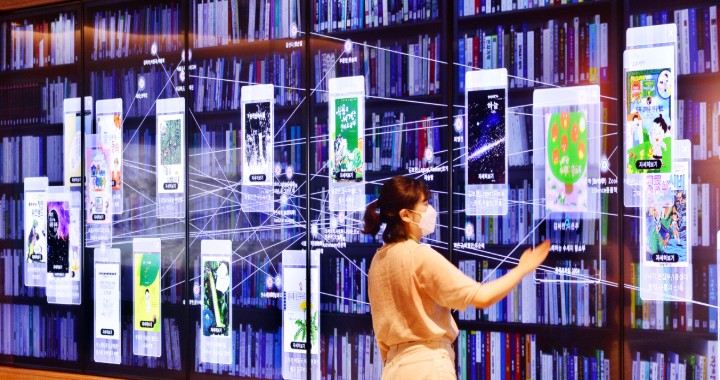
In today’s digital economy, product visualization has become a game-changer for industries such as e-commerce, manufacturing, and interior design. By enabling businesses to showcase highly detailed and interactive representations of their products, 3d product visualization enhances customer engagement, reduces return rates, and increases conversion rates. The ability to create photorealistic product representations in a virtual environment has revolutionized the way consumers interact with products before making a purchase. However, traditional methods of rendering and modeling often fall short in delivering high levels of realism and efficiency. This is where artificial intelligence (AI) and deep learning come into play, pushing the boundaries of what’s possible in 3D visualization.
The Role of AI in 3d product visualization
Deep learning, a subset of AI, has drastically improved the ability to generate, enhance, and manipulate 3D product models with unprecedented accuracy. By leveraging neural networks and vast datasets, AI-powered systems can analyze and predict textures, lighting, reflections, and even physics-based interactions. This results in ultra-realistic 3D renders that can be manipulated in real-time, offering a more immersive experience for consumers.
One of the biggest challenges in 3D rendering is creating materials that appear lifelike under different lighting conditions. Deep learning algorithms, trained on thousands of real-world images, can intelligently simulate how materials like glass, metal, or fabric behave under various lighting conditions. This allows designers to generate highly detailed textures without manually fine-tuning every aspect, saving both time and effort.
How Deep Learning Enhances Realism
1. Automated Texture Generation and Enhancement
Deep learning models, such as generative adversarial networks, can generate hyper-realistic textures by learning from real-world images. Instead of relying on traditional, labor-intensive texturing methods, AI can automatically generate high-quality textures that closely resemble natural surfaces. This is especially useful for industries like fashion, where realistic fabric representation is crucial for online shoppers.
2. AI-Powered Lighting and Shadowing
One of the most significant aspects of realism in 3D visualization is how light interacts with objects. AI-driven tools can analyze lighting conditions in real-time and adjust shadows, reflections, and refractions accordingly. Ray tracing, an advanced rendering technique that simulates real-world lighting behavior, has been enhanced by AI to produce near-photorealistic images without the traditionally high computational cost.
3. Real-Time Rendering and Optimization
Deep learning has also made real-time rendering more efficient. Traditionally, high-quality 3d product visualization required extensive computing power, making real-time interaction difficult. AI-powered algorithms optimize rendering pipelines by predicting the most important details to render first, significantly reducing latency while maintaining quality. This allows businesses to offer interactive 3D experiences on e-commerce websites without lag or excessive loading times.
4. AI-Based Physics Simulation
Beyond just visuals, AI is helping improve the way 3D models interact with virtual environments. For example, in furniture visualization, AI can simulate how a sofa’s fabric wrinkles when someone sits on it, or how light scatters through a transparent object. These physics-based enhancements contribute to a more immersive and believable experience for users.
Applications Across Industries
AI-driven 3d product visualization is transforming multiple industries:
- E-commerce: Online retailers can now provide customers with 360-degree interactive views of products, helping them make more informed purchase decisions.
- Automotive: Car manufacturers use AI to create ultra-realistic vehicle configurators, allowing customers to customize and visualize cars before purchasing.
- Interior Design and Architecture: AI-generated 3D renderings of furniture and decor enable customers to see how items would look in their space before buying.
- Gaming and Virtual Reality (VR): AI enhances the realism of 3D environments, making virtual worlds more believable and interactive.
The Future of AI in 3d product visualization
As AI continues to evolve, its role in 3D visualization will only expand. We can expect even more sophisticated deep learning models that can generate fully interactive, AI-driven 3D experiences in real-time. Advancements in neural rendering will make 3D objects indistinguishable from real-world counterparts, closing the gap between digital and physical realities.
Furthermore, AI will make 3D visualization more accessible to smaller businesses, eliminating the need for expensive software and rendering hardware. As cloud-based AI solutions become more prevalent, high-quality 3d product visualization will be within reach for anyone looking to enhance their digital offerings.
Conclusion
AI-driven 3d product visualization is revolutionizing how businesses and consumers interact with digital products. With deep learning-powered texture generation, lighting optimization, real-time rendering, and physics simulation, AI is bringing unparalleled realism to the virtual world. As technology advances, we can expect even more innovative applications that will redefine industries and reshape the way we experience digital content. The future of 3D visualization is not just realistic—it’s intelligent.




